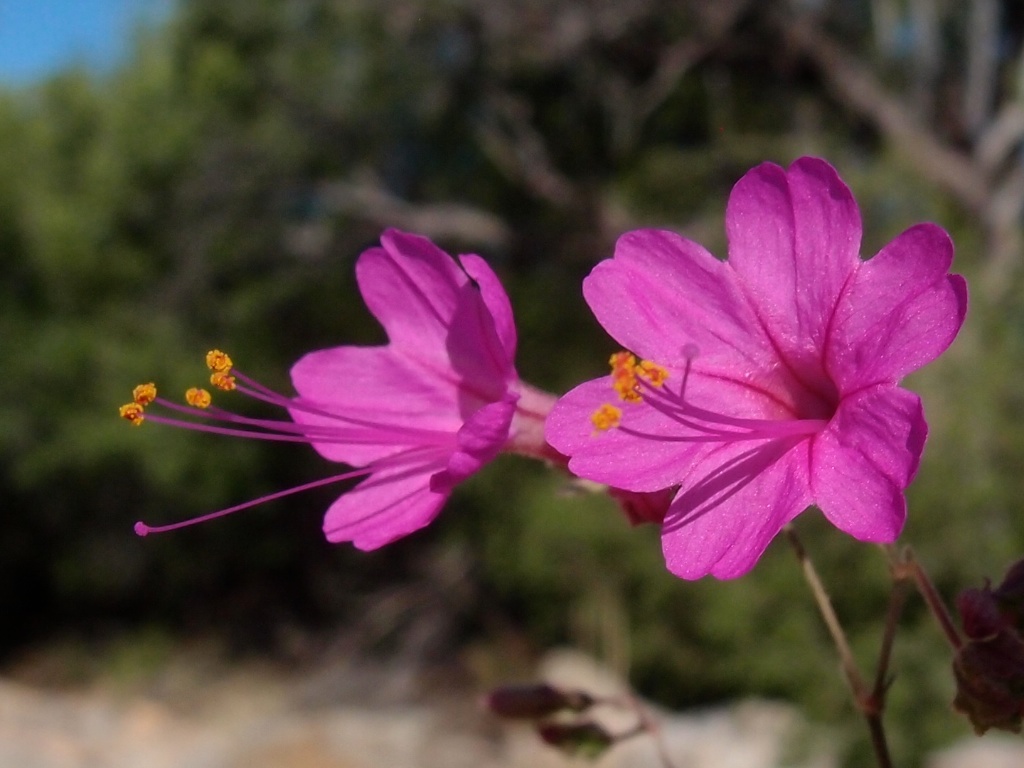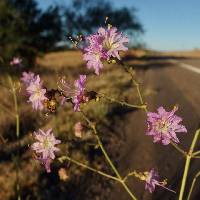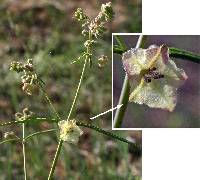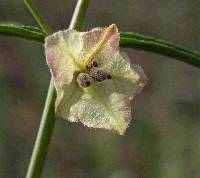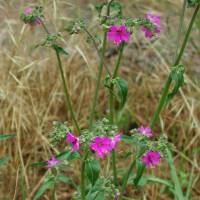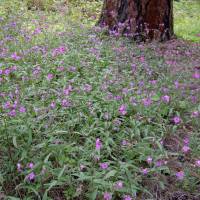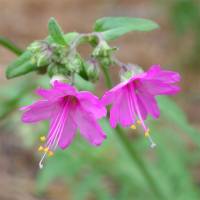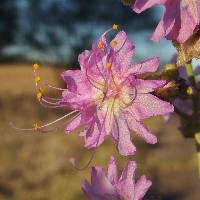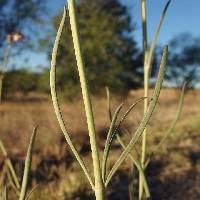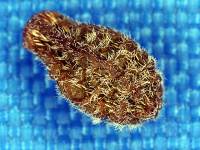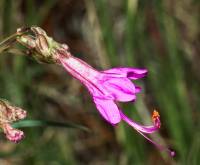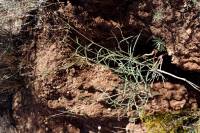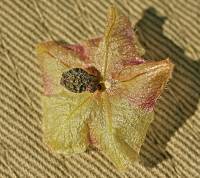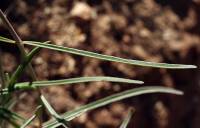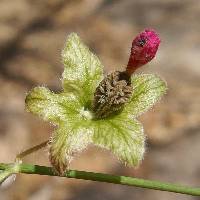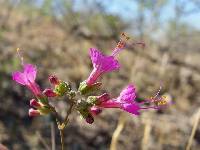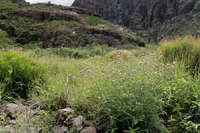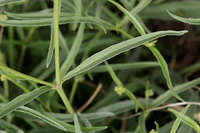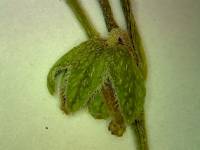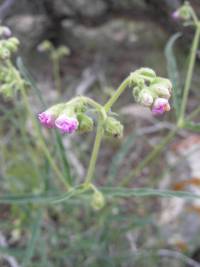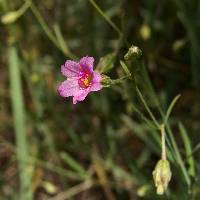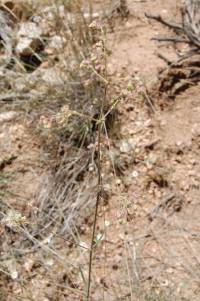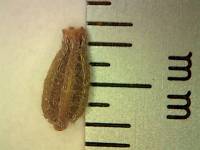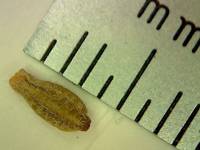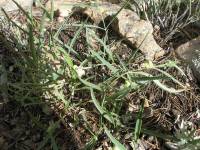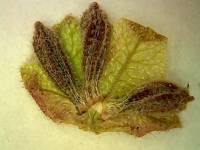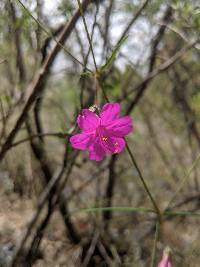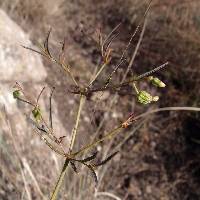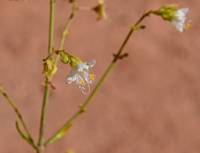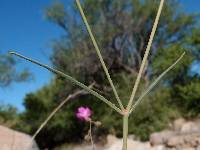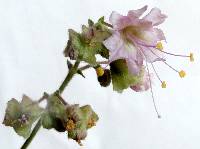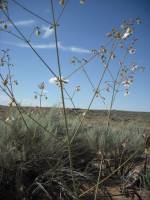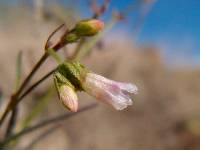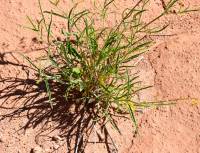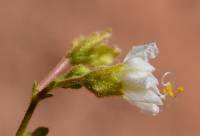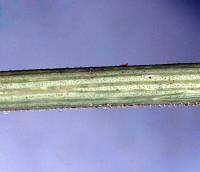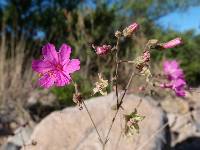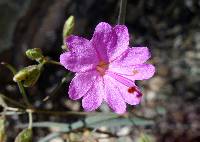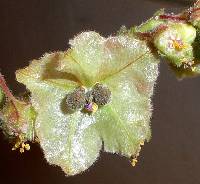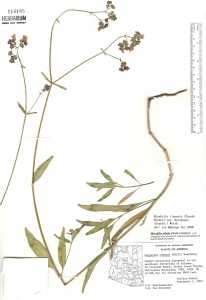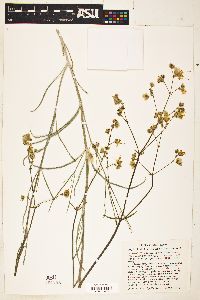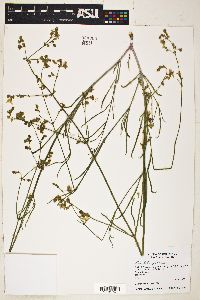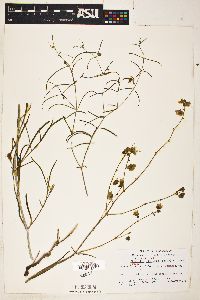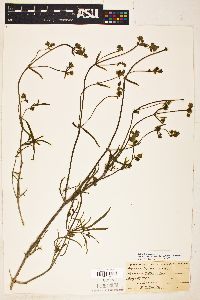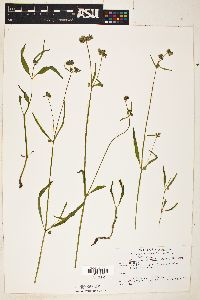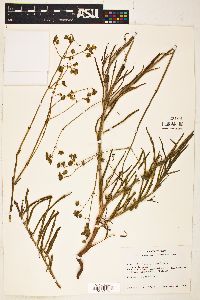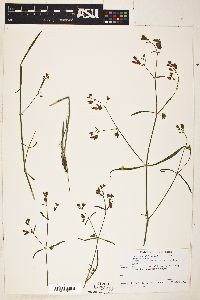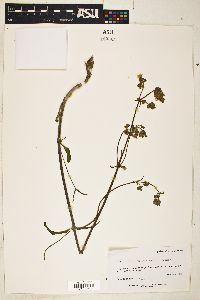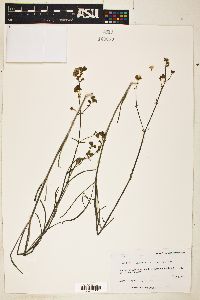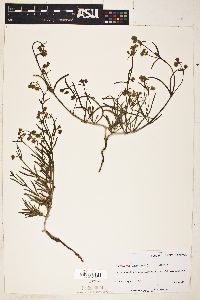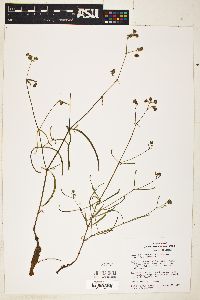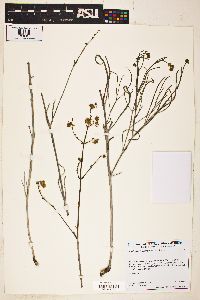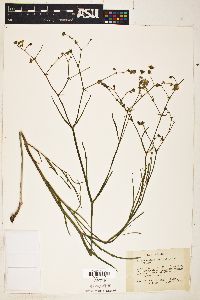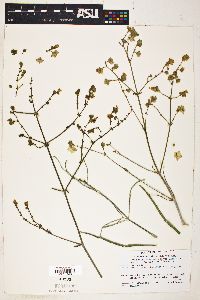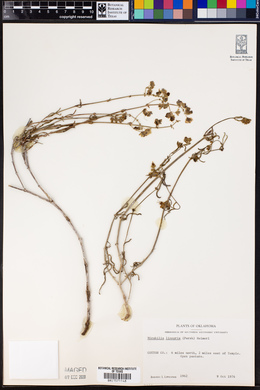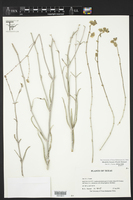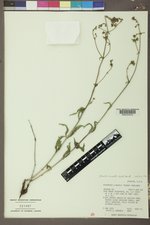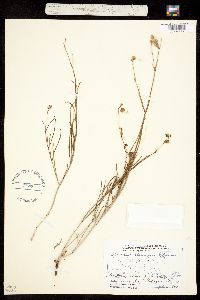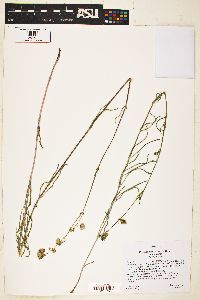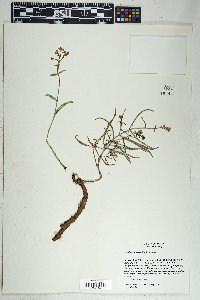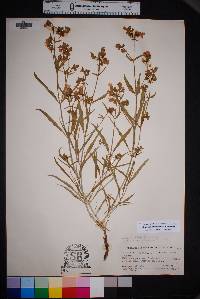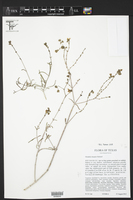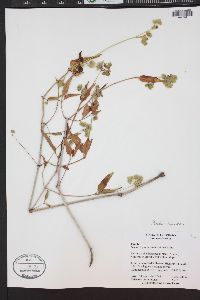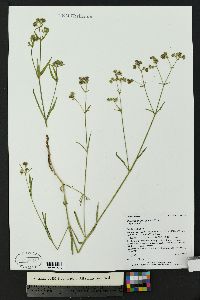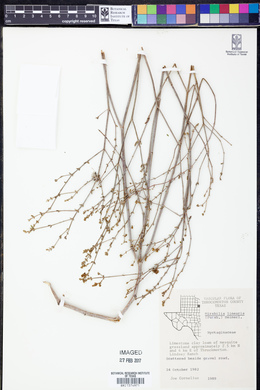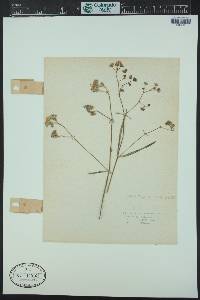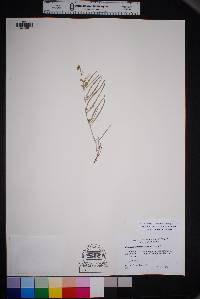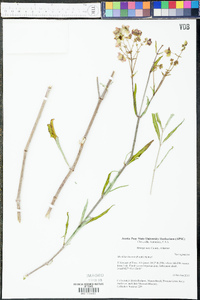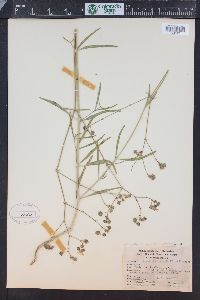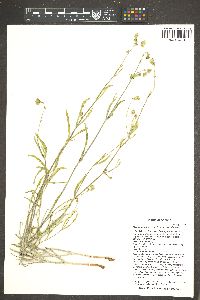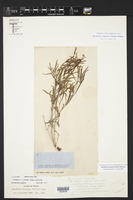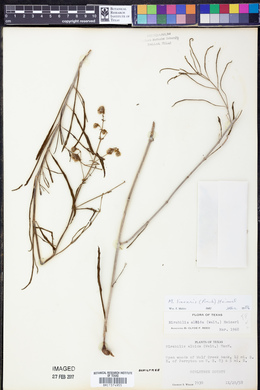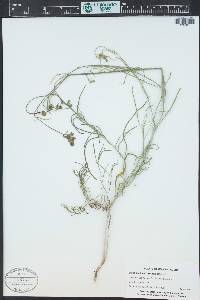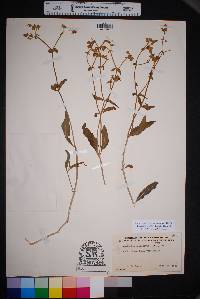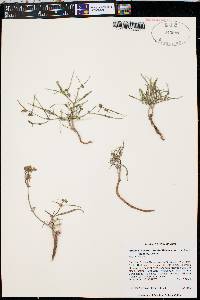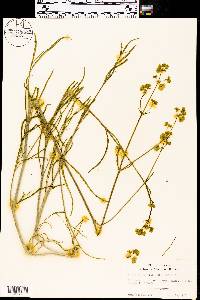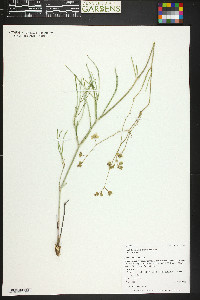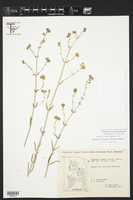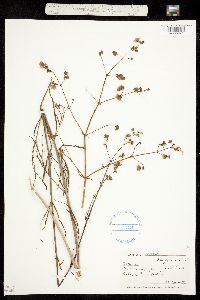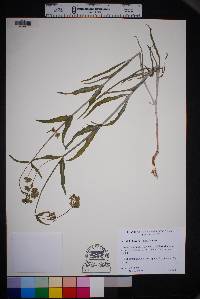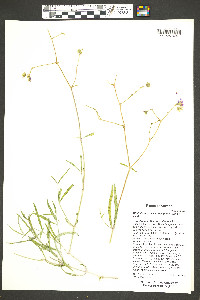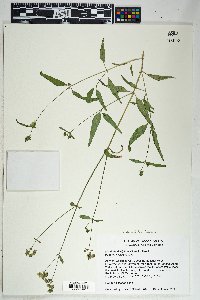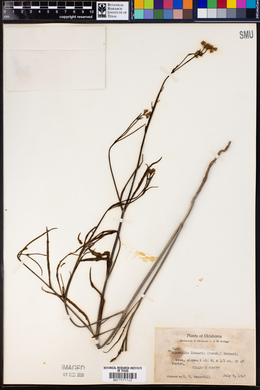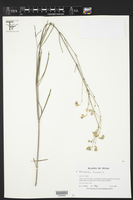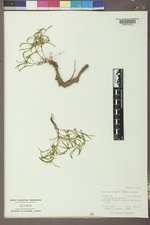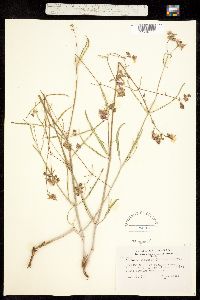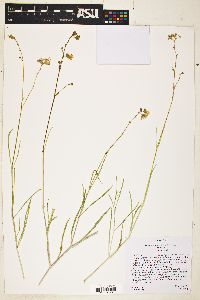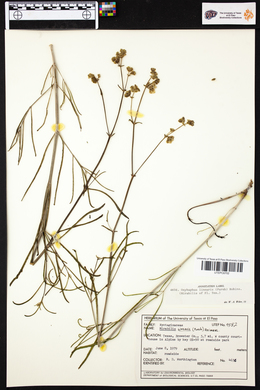Mirabilis linearis
|
|
|
|
Family: Nyctaginaceae
Narrow-Leaf Four-O'clock, more...linearleaf four-o'clock, narrowleaf four-o'clock, narrowleaf four o'clock
[Allionia angustifolia (Nutt.) Kuntze, moreAllionia decumbens (Nutt.) Spreng., Allionia decumbens var. assurgens Lunell, Allionia gausapoides Standl., Allionia linearis Pursh, Calymenia angustifolia Nutt., Calymenia decumbens Nutt., Mirabilis angustifolia (Nutt.) Mac Mill., Mirabilis decumbens (Nutt.) Daniels, Mirabilis diffusa (Heller) C.F. Reed, Mirabilis gausapoides (Standl.) Standl., Mirabilis hirsuta var. linearis (Pursh) Boivin, Mirabilis lanceolata (Rydb.) Standl., Oxybaphus angustifolius Sweet, Oxybaphus decumbens (Nutt.) Sweet, Oxybaphus diffusus (Heller) W.C. Martin & C.R. Hutchins, Oxybaphus gausapoides Standl., Oxybaphus lanceolatus (Rydb.) Standl., Oxybaphus linearis (Pursh) B.L. Robins., Oxybaphus linearis var. linearis , Oxybaphus linearis var. subhispidus (Heimerl) Dayton] |
Stems decumbent, ascending, or erect, sparsely leafy with few stems to very leafy and bushy branched, leafy primarily in proximal 1/5 to throughout, 1-1.3 dm, basally minutely puberulent in 2 lines, sparsely or densely spreading-hirsute, or rarely glabrate or glabrous; distally minutely puberulent in 2 lines, sparsely or densely spreading-hirsute, or rarely glabrate or glabrous, usually glandular-puberulent or pubescent in inflorescence. Leaves strongly ascending to spreading at 5-80°; petiole 0-1.5 cm; blade green to blue-gray and glaucous, linear to linear-lanceolate, rarely lanceolate, 3-11.5 × 0.1-1(-1.8) cm, thin to fleshy, thick, and succulent, base long attenuate or narrowly acute, apex acutely tapered to rounded, surfaces glabrous, glandular-pubescent, or hirsute. Inflorescences axillary and terminal, when axillary, consisting of single involucres or short branches, when terminal with ± well-defined central axis and shorter side branches, or narrowly to widely forked without main axis; peduncle 3-10 mm, usually spreading glandular-puberulent or pilose, crosswalls of hairs pale or dark; involucres pale green, sometimes tinged with purple, narrowly to widely bell-shaped, 3-6 mm in flower, 4-10(-15) mm in fruit, spreading viscid-pubescent to hirsute, 40-70% connate, lobes ovate. Flowers 3 per involucre; perianth white to purple-pink, 0.7-1.1 cm. Fruits olive brown or dark olive brown, narrowly obovate and tapering at both ends to obovoid, 3.1-5.5 mm, pubescent with spreading crinkled hairs in tufts or ± evenly distributed, hairs 0.1-0.5 mm; ribs sometimes slightly paler, slightly elevated above surface (usually less than 0.5 times as wide as high), low rounded to round-angled, 0.5-1 times width of sulci, 0.3-1 times as wide as high, smooth throughout or sometimes rugose on sides, occasionally interrupted and tuberculate near apex; sulci with small or rarely large tubercles, or low and inconspicuous or occasionally high and prominently cross-rugose. Perennial herb 10 cm - 1.3 m tall Stem: erect, ascending, or decumbent-ascending, not very leafy, usually hairy above, but often nearly hairless toward the base. Leaves: few, opposite, stalkless, grayish or bluish green, hairless or glandular-hairy, and non-toothed. The leaf blades are linear, 3 - 10 cm long, 0.1 - 1 cm wide, and abruptly smaller and shorter in the inflorescence. Inflorescence: of single clusters in axils, or small clusters terminating long branches, the entire inflorescence covered with spreading, glandular hairs or long hairs. Each cluster is composed of three flowers sitting atop a pale green or purple-tinged, spreading-hairy, 3 - 6 mm tall, bell-shaped cup (involucre) formed by five fused bracts with egg-shaped tips. Flowers: white to deep rose-pink, 0.7 - 1.1 cm long, a bit wider than long, radially symmetric, broadly funnel-shaped with a short, narrow tube, and five, abruptly flared lobes. Sepals: showy, not green, white to deep rose-pink, and mimicking petals. The five sepals are fused at the base, constricted above the ovary into a 1 - 2 mm long, narrow tube, then separated into five, abruptly flared lobes. Petals: none. Stamens: three to five, long, and extending beyond the sepal tube. Pistil: with one, single-chambered, superior ovary; one, long, threadlike style, which extends beyond the stamens; and a rounded, head-like stigma. Fruit: an olive brown to dark olive brown (sometimes with more pale longitudinal ridges), 3.1 - 5.5 mm long, narrowly inversely egg-shaped, one-seeded achene, which is subtended by the 0.5 - 1.5 cm tall bract cup (involucre). The achene tapers at both ends, has five, low, round-edged, longitudinal ridges, with the areas between the ridges transversely wrinkled or sometimes covered with small bumps. Surface evenly covered, or just tufted, with spreading, crinkled, 0.1 - 0.5 mm long hairs. When wet, the fruit becomes sticky and gelatinous (mucilaginous). Root: cylindric, cord-like, or thick and woody. Similar species: Mirabilis linearis is quite distinct among the Chicago Region species of Mirabilis since it is the only one with linear leaves less than 1 cm wide. Also, the fruit of this species does not have raised bumps or deep cuts on the longitudinal ridges, and normally only has transverse wrinkles rather than raised bumps between the ridges. Flowering: late spring to late summer Habitat and ecology: Introduced from farther west, occasional along railroad tracks, and also in sandy waste ground. Occurence in the Chicago region: non-native Notes: All of the plants of this species in the Chicago Region belong to the typical variety, but two other varieties (M. linearis var. decipiens and M. linearis var. subhispida) occur in southwestern North America. Author: The Field Museum FNA 2003, Allred and Ivey 2012 Duration: Perennial Nativity: Native Lifeform: Forb/Herb General: Perennial herb, 20-100 cm tall, from an elongate woody taproot; stems erect to ascending or procumbent, usually glabrous, at least above, and often whitish-waxy (glaucous). Leaves: Opposite and sessile, or on petioles up to 1.5 cm long; blades linear to linear-lanceolate, 3-12 cm long and 1-10 mm wide, thin or thick and succulent, with surfaces glabrous or hairy. Flowers: White to pink-purple, most flowers are arranged in terminal panicles with a distinct main axis and short lateral branches; occasional flower clusters also scattered in leaf axils; each small cluster of 3 flowers is surrounded by a bell-shaped involucre which is pale green and sometimes purple-tinged, sticky-hairy, 3-6 mm long in flower and 4-15 mm long in fruit; petals fused into a bell-shape, about 1 cm long, white to rose-purple. Fruits: Achenes olive-brown, 3-5 mm long, narrowly obovate, 5-angled, and hairy; containing a single pale yellow-brown seed. Ecology: Found in open sandy, gravelly, or rocky soils and disturbed areas, from 1,000-9,000 ft (305-2743 m); flowers in late spring and summer. Distribution: Throughout the Great Plains and the valleys of the Rocky Mountain region; south to the central plateau of n MEX; sporadically introduced elsewhere, especially CA and parts of the midwest. Notes: Distinguished from other Mirabilis spp by its narrow leaves; small flowers less than 2 cm long, which range in color from white to rose-purple; and the involucres which wrap around each cluster of flowers are pale green to purple-tinged and 3-6 mm long when the plant is in flower, and then turn tan and transluscent, and expand to a length of about 6-10 mm once the plant is in fruit. Flora of North America recognizes three varieties, all of which are found in the southwest. Var. subhispida has distinctly hairy stems, at least near the base of the plant, and occurs in eastern New Mexico and west Texas. Var. decipiens has mostly hairless stems; linear-lanceolate to lanceolate, green leaves; pink to deep purple-pink flowers; and occurs in eastern Arizona, western New Mexico, and neighboring southwest Colorado and southeast Utah. Var. linearis has mostly hairless stems; linear, blue-green or gray-green leaves; white-to rose-pink flowers; and occurs throughout the range of the species. Ethnobotany: Fruits and seeds were used for food; infusion of roots was used to treat painful urination, stomach disorders, coughs, and burns; also used ceremonially as a life medicine and for good luck in hunting. Etymology: Mirabilis is Latin for miraculous or wonderful, alluding to the beauty of the plants; linearis refers to the linear shape of the leaves. Synonyms: Allionia decumbens, A. gausapoides, A. linearis, Calymenia decumbens, Mirabilis decumbens, M. diffusa, M. gausapoides, M. hirsuta var. linearis, M. lanceolata, M. linearis var. subhispida, Oxybaphys angustifolius, O. decumbens, O. diffusus, O. gausapoides Editor: SBuckley 2010, AHazelton 2017 Stems erect or decumbent, 3-10 dm, glaucous and commonly glabrous below the usually glandular-hairy infl; lvs linear, without differentiated petiole, rarely over 5 mm wide, glaucous, thick and succulent, becoming very wrinkled when dry; invol pubescent, 5 mm, becoming 1-2 cm wide; cal pale pink to purple, 1 cm; anthocarp narrowly obovoid, 5-7 mm, with rugose sides and smooth ridges; 2n=52. Dry or sandy soil, prairies, and barrens; N.D. (and reputedly Minn.) to Mont., s. to Tex., Ariz., and n. Mex.; intr. in Mo., and rarely adventive in e. U.S. Summer. (Allionia l.; Oxybaphus l.) Gleason, Henry A. & Cronquist, Arthur J. 1991. Manual of vascular plants of northeastern United States and adjacent Canada. lxxv + 910 pp. ©The New York Botanical Garden. All rights reserved. Used by permission. From Flora of Indiana (1940) by Charles C. Deam Indiana Coefficient of Conservatism: C = Wetland Indicator Status: |
|
|
|

